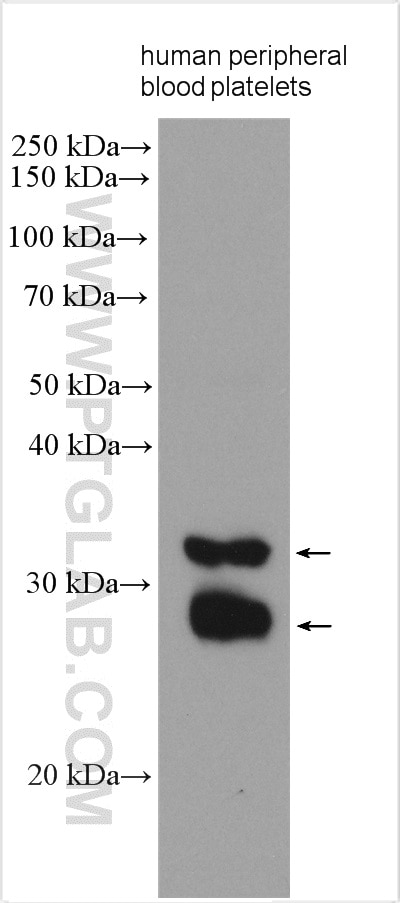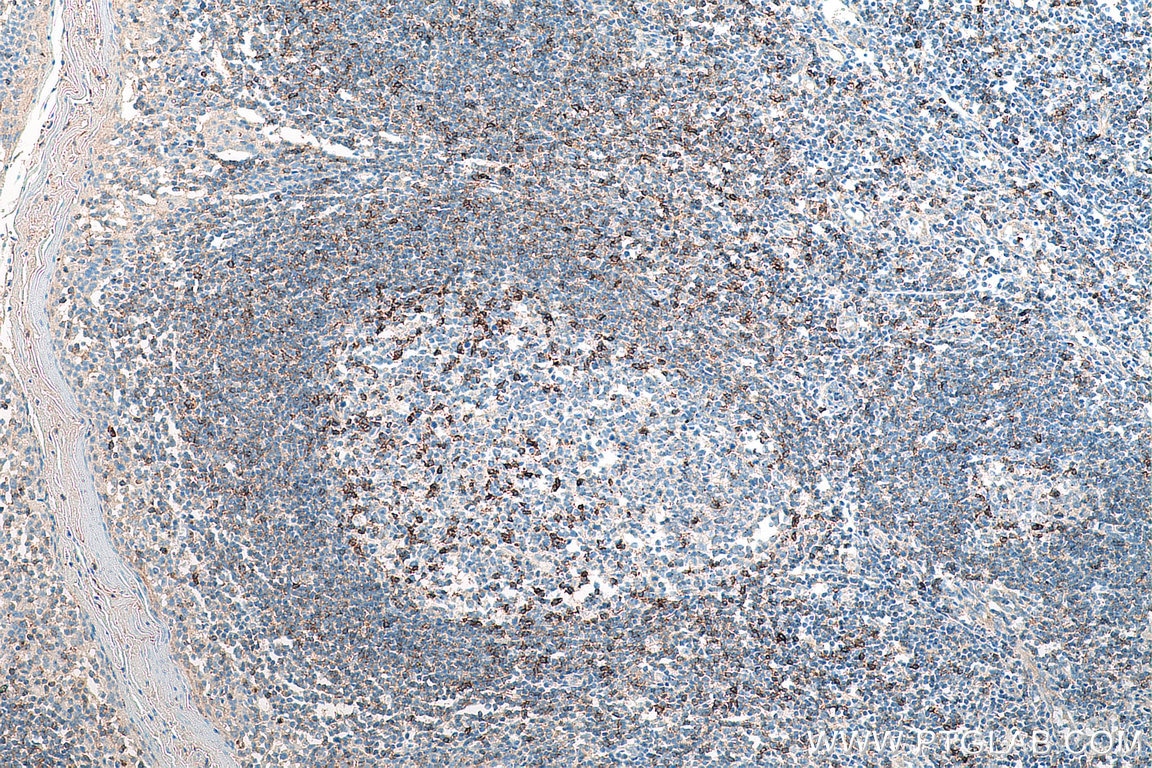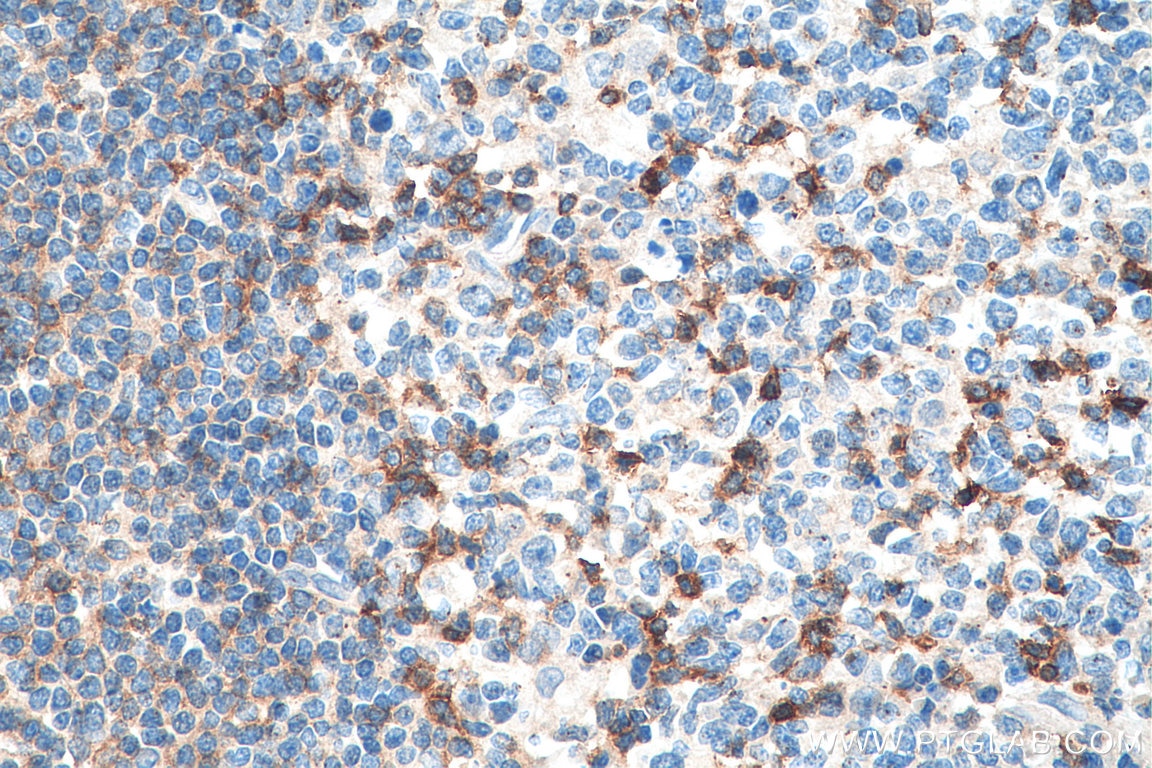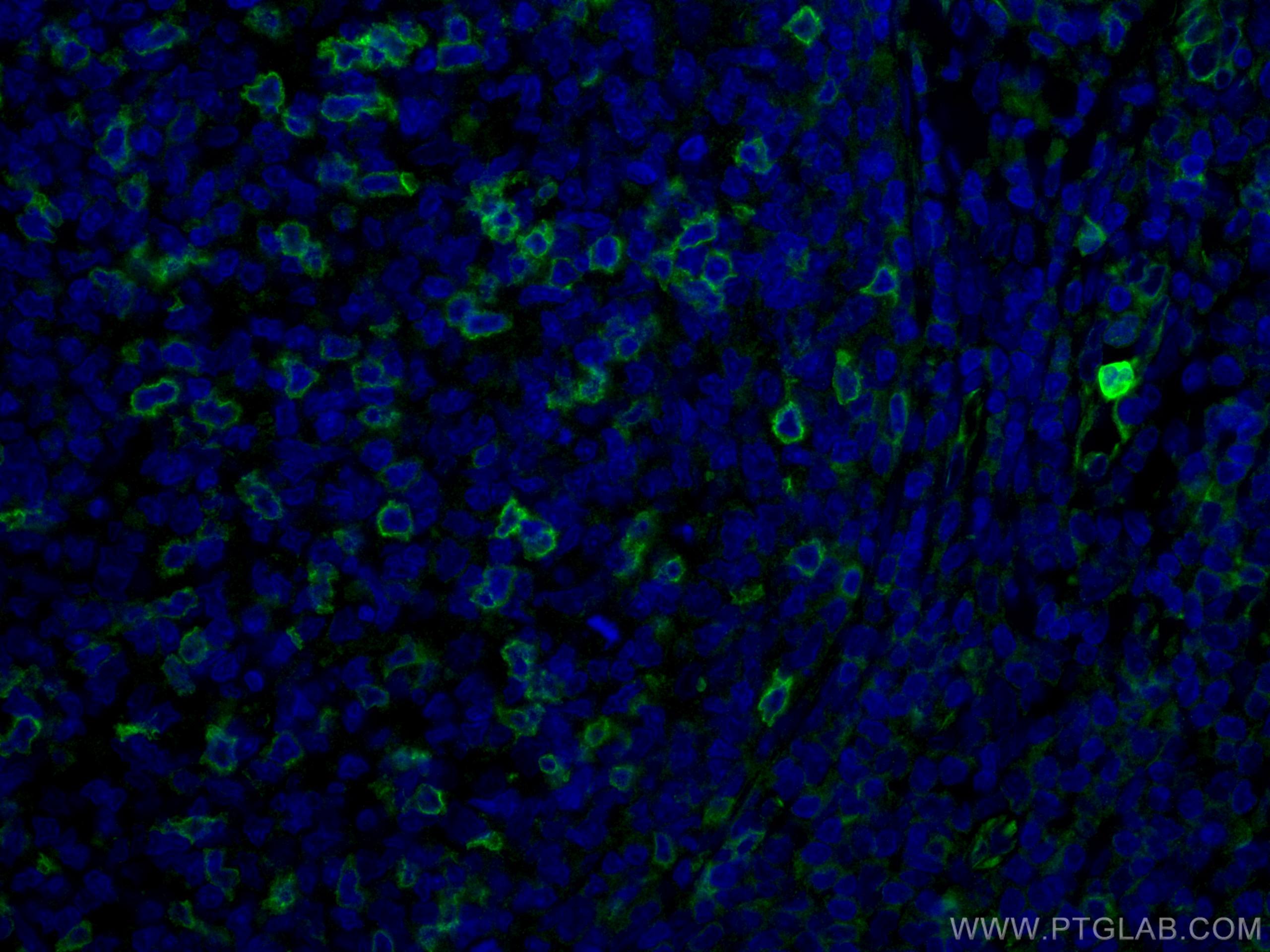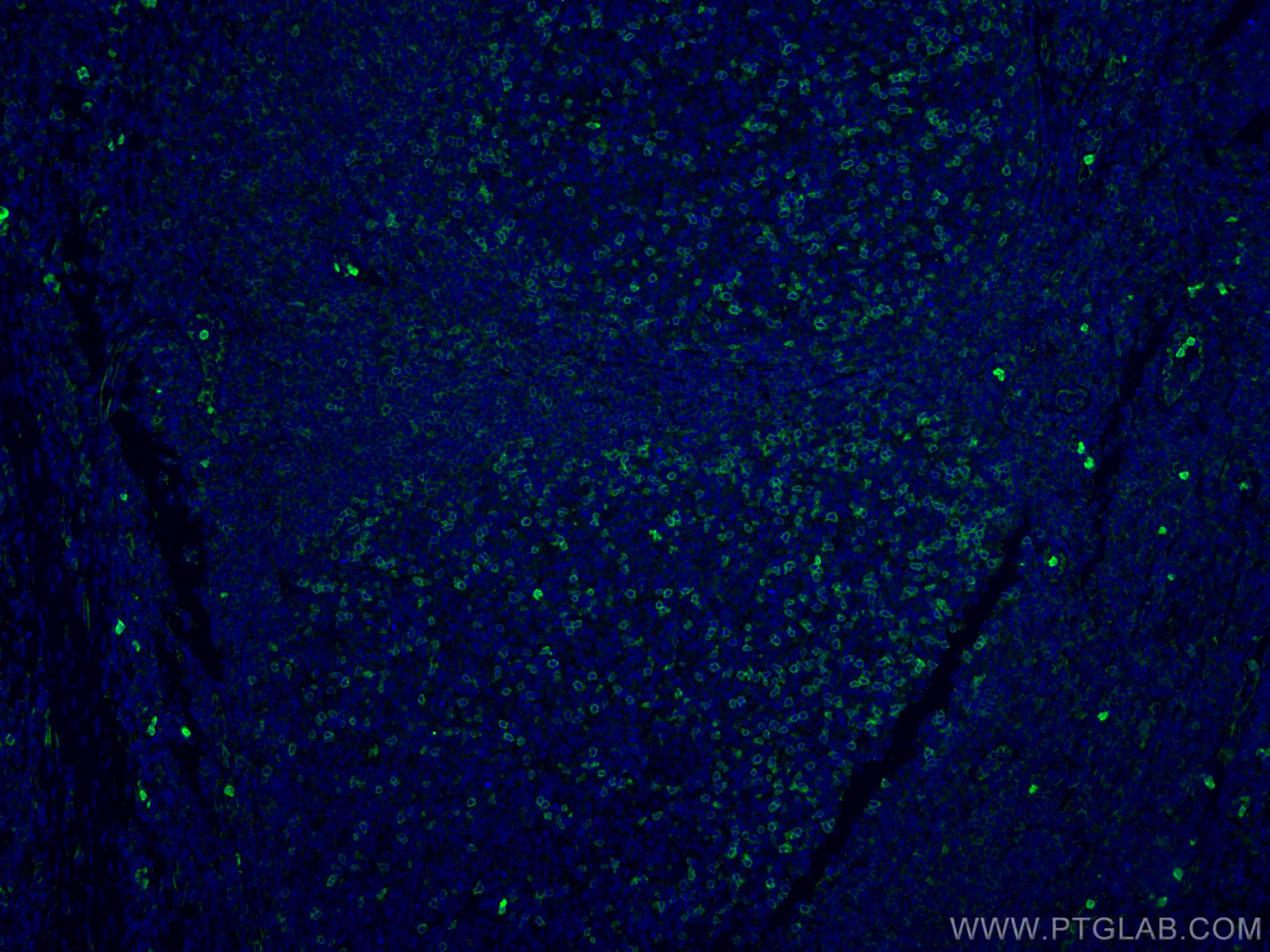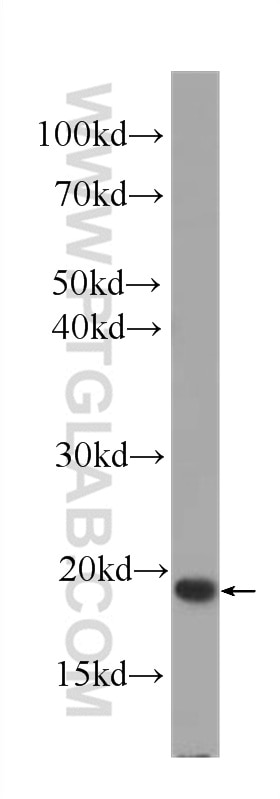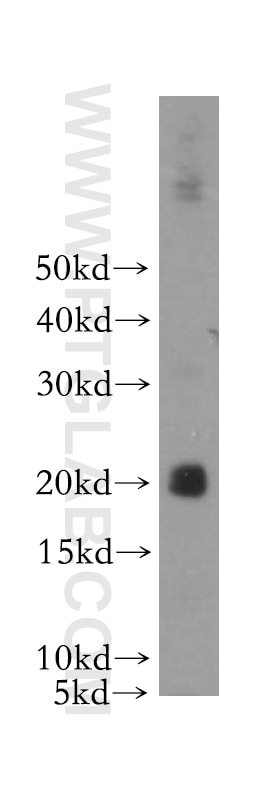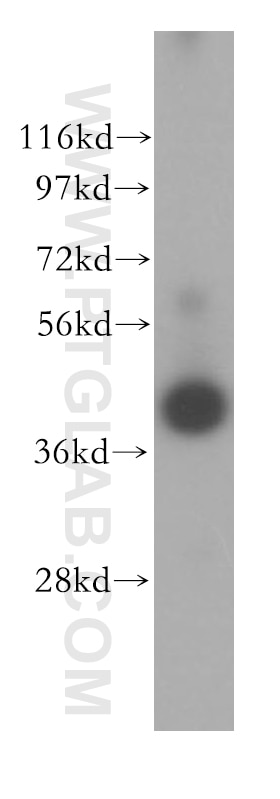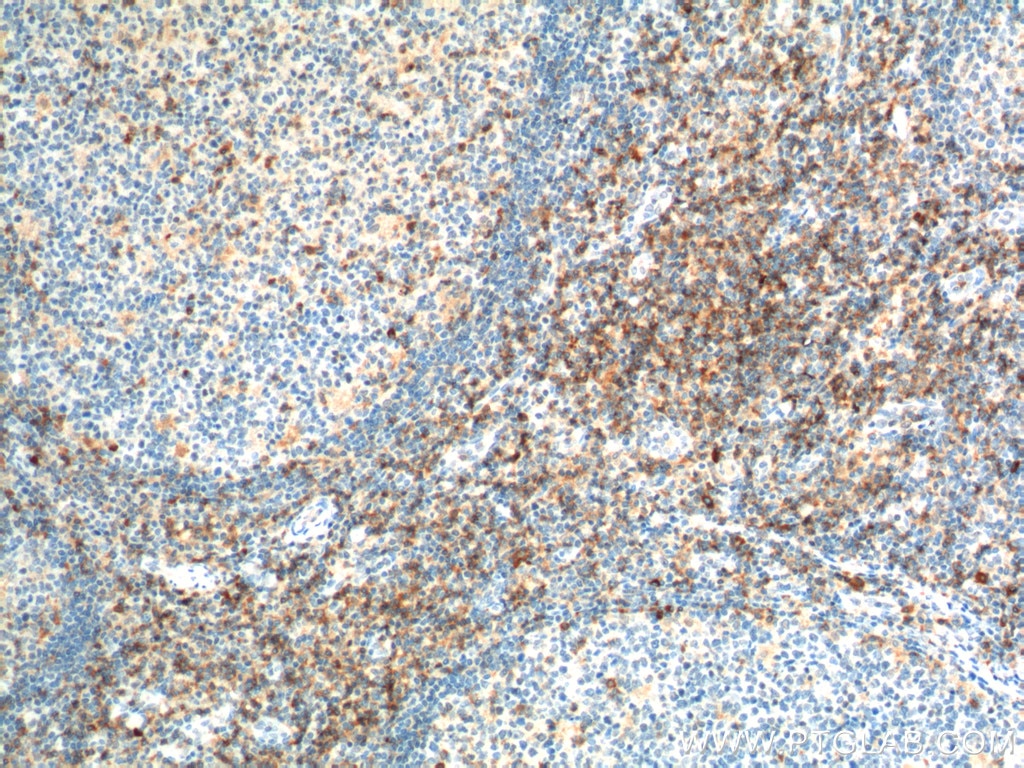CD69 Polyklonaler Antikörper
CD69 Polyklonal Antikörper für WB, IHC, IF-P, ELISA
Wirt / Isotyp
Kaninchen / IgG
Getestete Reaktivität
human und mehr (1)
Anwendung
WB, IHC, IF-P, ELISA
Konjugation
Unkonjugiert
Kat-Nr. : 10803-1-AP
Synonyme
Galerie der Validierungsdaten
Geprüfte Anwendungen
| Erfolgreiche Detektion in WB | human peripheral blood platelets |
| Erfolgreiche Detektion in IHC | humanes Tonsillitisgewebe Hinweis: Antigendemaskierung mit TE-Puffer pH 9,0 empfohlen. (*) Wahlweise kann die Antigendemaskierung auch mit Citratpuffer pH 6,0 erfolgen. |
| Erfolgreiche Detektion in IF-P | humanes Tonsillitisgewebe |
Empfohlene Verdünnung
| Anwendung | Verdünnung |
|---|---|
| Western Blot (WB) | WB : 1:500-1:3000 |
| Immunhistochemie (IHC) | IHC : 1:2000-1:8000 |
| Immunfluoreszenz (IF)-P | IF-P : 1:50-1:500 |
| It is recommended that this reagent should be titrated in each testing system to obtain optimal results. | |
| Sample-dependent, check data in validation data gallery | |
Veröffentlichte Anwendungen
| WB | See 1 publications below |
| IHC | See 2 publications below |
| IF | See 4 publications below |
| FC | See 1 publications below |
Produktinformation
10803-1-AP bindet in WB, IHC, IF-P, ELISA CD69 und zeigt Reaktivität mit human
| Getestete Reaktivität | human |
| In Publikationen genannte Reaktivität | human, Maus |
| Wirt / Isotyp | Kaninchen / IgG |
| Klonalität | Polyklonal |
| Typ | Antikörper |
| Immunogen | CD69 fusion protein Ag1094 |
| Vollständiger Name | CD69 molecule |
| Berechnetes Molekulargewicht | 23 kDa |
| Beobachtetes Molekulargewicht | 28 kDa, 32 kDa |
| GenBank-Zugangsnummer | BC007037 |
| Gene symbol | CD69 |
| Gene ID (NCBI) | 969 |
| Konjugation | Unkonjugiert |
| Form | Liquid |
| Reinigungsmethode | Antigen-Affinitätsreinigung |
| Lagerungspuffer | PBS mit 0.02% Natriumazid und 50% Glycerin pH 7.3. |
| Lagerungsbedingungen | Bei -20°C lagern. Nach dem Versand ein Jahr lang stabil Aliquotieren ist bei -20oC Lagerung nicht notwendig. 20ul Größen enthalten 0,1% BSA. |
Hintergrundinformationen
CD69, also known as activation inducer molecule (AIM) or early activation antigen (EA1), is a cell surface glycoprotein expressed shortly after activation on T lymphocytes and other cells of haematopoietic origin, including natural killer cells. It is a disulfide-linked homodimer composed of two chains belonging to the type II integral protein with a C-type lectin domain. CD69 is involved in lymphocyte proliferation and functions as a signal-transmitting receptor in lymphocytes, natural killer cells, and platelets.
Protokolle
| Produktspezifische Protokolle | |
|---|---|
| WB protocol for CD69 antibody 10803-1-AP | Protokoll herunterladen |
| IHC protocol for CD69 antibody 10803-1-AP | Protokoll herunterladen |
| IF protocol for CD69 antibody 10803-1-AP | Protokoll herunterladen |
| Standard-Protokolle | |
|---|---|
| Klicken Sie hier, um unsere Standardprotokolle anzuzeigen |
Publikationen
| Species | Application | Title |
|---|---|---|
Cancer Commun (Lond) Targeting autophagy overcomes cancer-intrinsic resistance to CAR-T immunotherapy in B-cell malignancies | ||
iScience Highly multiplexed spatial analysis identifies tissue-resident memory T cells as drivers of ulcerative and immune checkpoint inhibitor colitis | ||
Expert Rev Clin Immunol Juxtaposition of IL-1β and IFN-γ expression and apoptosis of keratinocytes in adult-onset Still's disease. | ||
Cell Rep Longitudinal analyses reveal distinct immune response landscapes in lung and intestinal tissues from SARS-CoV-2-infected rhesus macaques. | ||
Oncoimmunology Development and validation of an interferon signature predicting prognosis and treatment response for glioblastoma. | ||
J Nanobiotechnology Optogenetic engineered umbilical cord MSC-derived exosomes for remodeling of the immune microenvironment in diabetic wounds and the promotion of tissue repair |
